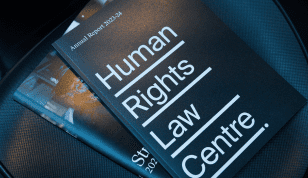Rights of the Child and Minimum Sentencing Legislation
Centre for Child Law v Minister for Justice and Constitutional Development and Others (with the National Institute for Crime Prevention and the Re-integration of Offenders as Amicus Curiae) [2009] ZACC 18 (15 July 2009)
The Constitutional Court of South Africa upheld a decision of the High Court declaring invalid provisions of the Criminal Law (Sentencing) Amendment Act 38 (2007) (Amendment Act) that made minimum sentences for certain serious crimes applicable to 16 and 17 year old children. The provisions were found to negate the Constitution’s principles that children should only be detained as a last resort and for the shortest period of time.
Facts
In S v B 2006 (1) SACR 311 the Supreme Court of Appeal held that a discretion was automatically enlivened in a sentencing court for offenders aged between 16 and 17 years old. The discretion enabled a sentencing court, inter alia, to depart from prescribed minimum sentences. To reverse the decision of the Supreme Court of Appeal, the Amendment Act was enacted, which amended the Criminal Law Amendment Act 105 of 1997. The effect of the amendments was to make minimum sentences applicable to offenders who were 16 or 17 at the time of the offence and to make it expressly clear that children under the age of 16 at the time of the offence are excluded from the application of minimum sentences.
The Centre for Child Law at the University of Pretoria challenged the constitutional validity of the Amendment Act. The High Court upheld the challenge finding that applying minimum sentences to children aged 16 or 17 was inconsistent with principles espoused in the Constitution of imprisonment as a last resort and for the shortest appropriate period of time.
The Centre sought confirmation of the declaration of invalidity in the Constitutional Court. The Centre also sought an order that children already sentenced under the amended provisions be identified and have their sentences reconsidered.
Decision
Cameron J, with whom Langa CJ, Moseneke DCJ, Mokgoro, O’Regan, Sachs and Van der Westhuizen JJ concurred, upheld the High Court’s judgment. (Yacoob, Ngcobo, Nkabinde and Skweyiya JJ dissenting)
The Court considered the scope and reasons for the protection under s 28 of the Constitution. Section 28(1)(g) stipulates that a child has the right not to be detained except as a measure of last resort and only for the shortest period of time. Subsection (2) provides that a child’s best interests are paramount. The Court stated at [32] that section 28(1)(g) requires an ‘individuated judicial response to sentencing, one that focuses on the particular child who is being sentenced, rather than an approach encumbered by the rigid starting point that minimum sentencing entails’. The Court held that the minimum sentencing provisions constrain their discretion in the sentencing process, thereby diminishing the courts’ power of individuation.
Having found that the Amendment Act limited the rights protection in section 28, the Court went on to consider whether the limitation was justifiable. The Court held that the government had not justified the purpose behind expressly excluding 16 and 17 year olds from the protections in the Constitution. The Court stated, at [55], that ‘it could reasonably be expected that the Minister would set out reasons or policies that pertain to what specific conduct and social patterns within the age-group previously exempt, but now encompassed, created the need to impose a limitation on the rights in section 28’. The government’s objective in enacting the Amendment Act was to reverse the effect of S v B, which the Court held was insufficient. The government argued that judicial notice should be taken that serious crime in all categories had increased. The Court held, at [60], that ‘high crime levels and well-justified public anger do not provide justification for a legislative intervention overriding a specific protection in the Bill of Rights’.
The Court did not grant the relief the Centre sought in relation to children already sentenced under the amended provisions on the grounds (ie that it was inconsistent with the proper approach to retroactivity in criminal proceedings). Instead, the Court ordered the government to identify the number of affected children sentenced under the Amending Act to afford them an opportunity to lodge appeals.
Relevance to the Victorian Charter
Section 23 of the Victorian Charter protects the rights of children in the criminal process. Section 17 more generally enshrines the rights of children to be protected by society and the State. To date these provisions have not come before the courts, however interpretations of these protected rights could be guided by jurisprudence of the South African Constitutional Court.
The decision is available at http://www.saflii.org/za/cases/ZACC/2009/18.html.
Prabha Nandagopal is former secondee to the Human Rights Law Centre from DLA Phillips Fox

Hawthorn Football Club settles Racial Discrimination Proceeding brought by First Nations former players
A high-profile legal dispute involving allegations of racial discrimination and mistreatment at Hawthorn Football Club (the Club) has concluded through private settlement. The Proceeding was initiated in the Federal Court of Australia by former First Nations players, their families and intimate partners.
Read more
Montana Supreme Court rules constitutional right to a stable climate was violated by law blocking review of greenhouse gas impacts
On 13 March 2020, 16 young people sued the State of Montana, the Governor, the Montana Department of Environmental Quality, Montana Department of Natural Resources and Conservation, and the Montana Department of Transportation. Held v Montana shows how powerful a right to a healthy environment can be in combatting environmental damage from climate change.
Read more
Federal Court rules against injunction to prevent animal cruelty in Victorian abattoir
The Game Meats Company of Australia attempted to stop Farm Transparency International Ltd from publishing a 14-minute video depicting alleged "extreme animal cruelty" obtained by a hidden camera.
Read more


